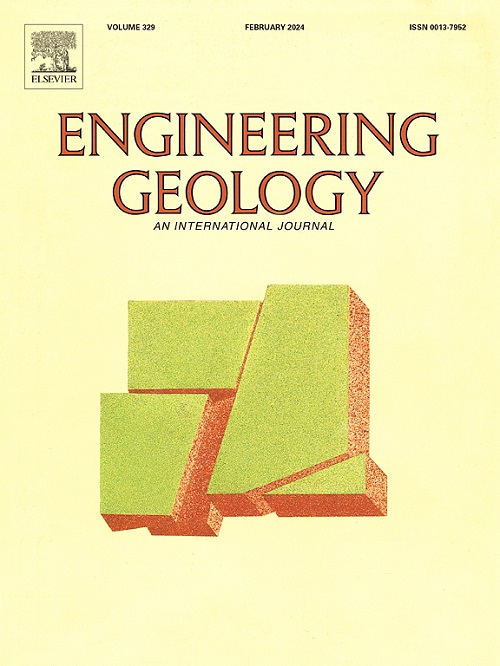Slope-specific rainfall thresholds for regional landslide early warning systems
IF 6.9
1区 工程技术
Q1 ENGINEERING, GEOLOGICAL
引用次数: 0
Abstract
The increasing frequency and intensity of extreme rainfall events have amplified the demand for effective landslide early warning systems. However, traditional regional models often neglect the spatial variability of rainfall thresholds, resulting in reduced warning efficiency. This study proposes a region-based threshold calculation framework that incorporates slope-specific geoenvironmental characteristics and historical rainfall conditions, aiming to bridge the gap between regional-scale and slope-scale early warning approaches. The method first establishes base rainfall thresholds and quantifies the spatial variability of geoenvironmental factors (SVGF) using a widely adopted regional thresholding technique and the information value method for landslide susceptibility assessment. It then constructs the spatial variability of historical rainfall (SVHR) based on the maximum historical effective cumulative rainfall. Finally, slope-specific thresholds are derived by adjusting the base curves using variability coefficients obtained from SVGF and SVHR. The proposed framework was validated in six rainfall-induced landslide-prone counties in northeastern Chongqing, China. Results show that the method outperformed existing models in both the modeling dataset (accuracy = 79.07 %) and the prediction dataset (accuracy = 75.39 %). During extreme rainfall events, the average hit rate improved by 46.10 %, and the maximum AUC reached 0.9282—surpassing all other models. By extending traditional threshold frameworks to support slope-specific adaptation, the proposed method effectively integrates with existing thresholding and susceptibility models. It offers a technically sound and adaptable solution for landslide early warning, with considerable promise for practical application.
区域滑坡预警系统的坡面降雨阈值
极端降雨事件的频率和强度不断增加,加大了对有效的滑坡预警系统的需求。然而,传统的区域模式往往忽略了降雨阈值的空间变异性,导致预警效率降低。本研究提出了一种基于区域的阈值计算框架,该框架结合了特定斜坡的地质环境特征和历史降雨条件,旨在弥合区域尺度和斜坡尺度预警方法之间的差距。该方法首先建立基本降雨阈值,并采用区域阈值技术和滑坡易感性评价的信息值法对地质环境因子的空间变异性进行量化。在此基础上,以最大历史有效累积降雨量为基础,构建了历史降雨量的空间变异性。最后,利用SVGF和SVHR得到的变异性系数对基准曲线进行调整,得到斜率特定阈值。该框架在中国重庆东北部6个降雨诱发滑坡易发县进行了验证。结果表明,该方法在建模数据集(准确率为79.07%)和预测数据集(准确率为75.39%)上均优于现有模型。在极端降水事件中,平均命中率提高46.10%,最大AUC达到0.9282,优于其他所有模型。该方法通过扩展传统阈值框架以支持特定坡度的适应,有效地将现有的阈值和敏感性模型集成在一起。为滑坡预警提供了一种技术上合理、适应性强的解决方案,具有较大的实际应用前景。
本文章由计算机程序翻译,如有差异,请以英文原文为准。
求助全文
约1分钟内获得全文
求助全文
来源期刊

Engineering Geology
地学-地球科学综合
CiteScore
13.70
自引率
12.20%
发文量
327
审稿时长
5.6 months
期刊介绍:
Engineering Geology, an international interdisciplinary journal, serves as a bridge between earth sciences and engineering, focusing on geological and geotechnical engineering. It welcomes studies with relevance to engineering, environmental concerns, and safety, catering to engineering geologists with backgrounds in geology or civil/mining engineering. Topics include applied geomorphology, structural geology, geophysics, geochemistry, environmental geology, hydrogeology, land use planning, natural hazards, remote sensing, soil and rock mechanics, and applied geotechnical engineering. The journal provides a platform for research at the intersection of geology and engineering disciplines.
 求助内容:
求助内容: 应助结果提醒方式:
应助结果提醒方式:


